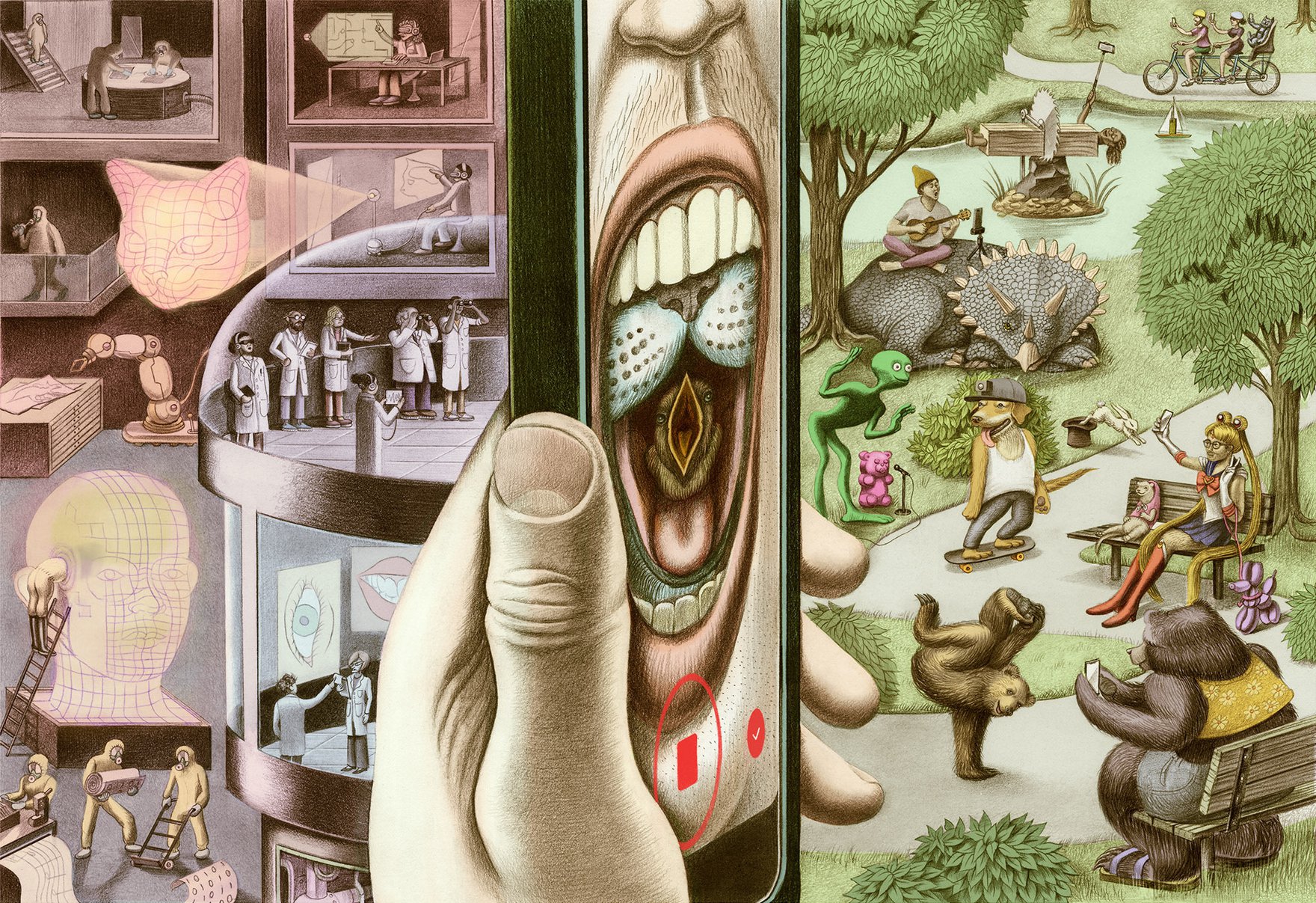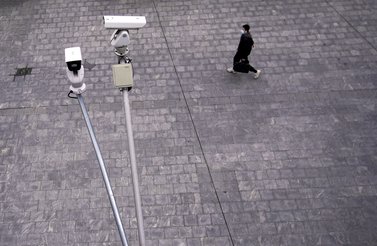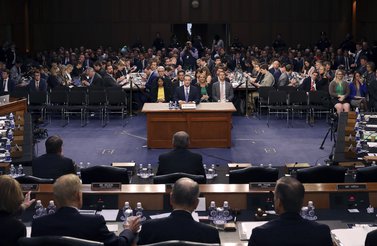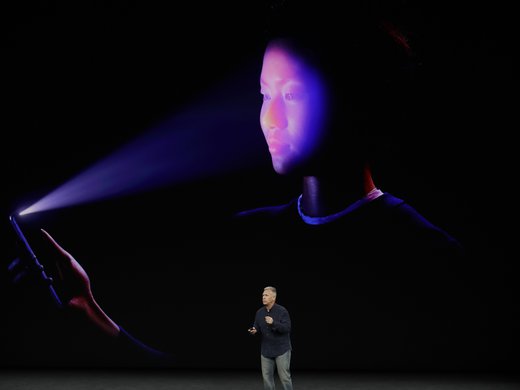TikTok’s rise has been meteoric. The fast-growing platform, simply described as an app for posting and sharing short videos, has been downloaded more than 1.65 billion times globally since 2016 and currently has more than 800 million monthly active users. Some industry leaders speculate that it could eclipse Instagram. When it comes to total cumulative users, ByteDance, the Chinese company behind TikTok, now ranks third, behind Facebook and the Chinese multinational Tencent (which owns WeChat, China’s largest platform, and QQ). With a valuation of US$75 billion, ByteDance is also the world’s most valuable start-up.
Not surprisingly, regulators haven’t been able to keep up. TikTok reproduces many of the problems associated with other social media giants, and after less than three years of existence, it brings an entirely new complexity to the challenge of platform governance.
To get a sense of those complexities, it’s important to first understand the app itself.
TikTok started as an app called Musical.ly, which was launched in 2014 and focused on lip synching and dance videos. In 2017, ByteDance created a similar app, called Douyin, in China and then, to reach markets outside of China, purchased Musical.ly. The two products merged and became TikTok in 2018.
TikTok, used mostly by people aged 16–24, gained much of its popularity from a few key features: it makes high-quality media production and publishing accessible. Where Facebook’s success relies in large part on its frictionless design and the addictiveness of its interface, TikTok combines frictionless design with advanced automated tools and filters to make it easy for users to create remarkably advanced videos and media.
At its core, ByteDance is an artificial intelligence (AI) company, and TikTok is an AI app. TikTok’s rise offers a glimpse into the larger global AI “arms race,” and China’s growing ambitions and abilities. In addition to offering automated tools to help users create media, the app relies heavily on a recommendation engine to keep users on the app and engaging with content.
A number of existing social media apps focus on the user’s connections and contacts, but TikTok focuses on what users are interested in. The default feed of content that a user sees is an endless stream of looping videos. As the user engages with this content, it adapts to their interests and attention. If a user spends more time watching videos of dogs, more videos of dogs will be offered to the user. Where other platforms focus on likes and comments, TikTok places greater emphasis on views and repeated views. The algorithms employed by TikTok can recognize objects, people, pets, sounds and places, enabling the service to quickly serve up content that users are interested in and, as a result, to hold their attention. TikTok seems far more responsive and able than its counterparts to cater to a user’s interests with minimal personal information.
The emphasis on attention and interests, rather than on who a user is following or whether a creator is already popular, has enabled a more level playing field for those who seek fame. Many TikTok users are attracted to the platform because they believe they have a chance to be famous there, more so than on any other available platform.
TikTok’s unique mix of characteristics — a strong user experience, impressive in-app features, advanced algorithmic ability, a focus on interests over the user’s network and that (somewhat) level playing field — came together to enable the app’s rapid growth. But that’s where the platform’s ability to stand out from the crowd ends. So far, TikTok has acted just as irresponsibly as the other social media platforms that came before it. The platform is currently seeking a US-based chief executive and faces a growing list of concerns from regulators, officials and researchers.
First, TikTok exists in the middle of a challenging geopolitical environment. Its rise as one of the few Chinese platforms to find mainstream success in North America (and globally) happened to align with mounting trade tensions between Washington and Beijing, as well as heightened scrutiny for Chinese surveillance technology.
Like any social media platform, TikTok is an instrument for massive data collection. Given the advanced AI employed by the app, which includes facial recognition, object recognition, voice recognition and location-based services, TikTok should be regarded as an element of an emerging new era of pervasive espionage. As Western governments worry about surveillance via Huawei’s telecommunications technology, should they also be concerned about surveillance through Chinese-owned social media?
Given the advanced AI employed by the app, which includes facial recognition, object recognition, voice recognition and location-based services, TikTok should be regarded as an element of an emerging new era of pervasive espionage.
For example, in December of 2019, security researcher Matthias Eberl discovered and shared evidence that ByteDance was using a combination of audio and browser tracking in the TikTok app to monitor who was watching and sharing videos. This kind of digital fingerprinting was in addition to traditional analytics, and allowed for extensive tracking of user activity beyond the TikTok app, across other social media platforms and the Web in general.
Similarly, TikTok raises issues of data sovereignty (where the data collected by the app is transferred and stored), privacy (what happens to users’ personal information and biometric data), disinformation (spreading fears and paranoia about COVID-19), and content moderation (how responsible the company is for illicit content posted on the platform).
While regulators are still trying to wrap their heads around a Facebook-centric world, TikTok is a reminder that tech titans of today could be history tomorrow. Mark Zuckerberg may understand this, or at least leverage it for his (and his company’s) own benefit. Repeatedly, in testimony before the US Congress, Zuckerberg has cited China as the biggest risk to his company, and to the US-based tech industry as a whole.
Regardless of Zuckerberg’s motivation, his testimony underscores an existing fear: some worry that TikTok could be a threat to US national security. Last fall, the Committee on Foreign Investment in the United States opened a national security review of ByteDance’s acquisition of Musical.ly after concerns were expressed by multiple senators regarding the collection of user data, the foreign influence of election campaigns and the suppression of political speech critical of the Chinese government.
Senators Tom Cotton and Chuck Schumer sent a letter to the US acting director of national intelligence, arguing that “TikTok is a potential counterintelligence threat we cannot ignore. Given these concerns, we ask that the Intelligence Community conduct an assessment of the national security risks posed by TikTok and other China-based content platforms operating in the U.S. and brief Congress on these findings.”
Senator Schumer followed up with a letter to the US secretary of the army, questioning their use of TikTok as a platform for recruiting and suggesting that the military should assess the national security risks of using China-owned technology platforms. The letter was successful in initiating an investigation into TikTok by the US Army.
Senator Marco Rubio has been another vocal critic of TikTok and ByteDance, accusing the companies of collecting valuable and sensitive information about millions of Americans.
ByteDance has responded to these concerns by arguing that it stores US data in the United States, with backups in Singapore, and that it does not remove content that would displease officials in Beijing. TikTok is operated by ByteDance outside of China, and the company argues that this places it outside the reach of the Chinese government.
This explanation may not satisfy the US government, and while the data may not directly flow back to China, the app is developed and operated in China, with the machine-learning infrastructure shared across all of ByteDance’s apps.
However, the United States appears to be taking a contradictory position as it negotiates trade agreements that stipulate the free flow of data back to US companies, but objects when that flow of data goes to a Chinese company. How will other countries react to this double standard?
TikTok’s data collection practices will almost certainly face greater scrutiny as concerns around personal privacy and the proliferation of facial recognition grow.
For example, while US-based companies are taking measures to ban deepfakes, TikTok may provide the feature to all users as a service. It fits within their growing suite of automated tools to make it easy for people to create viral and attention-getting content.
TikTok’s relentless pursuit of growth has come at the expense of responsibility. The (problematic) belief is that the algorithms can handle the scale, and that companies can hire the necessary human staff after the fact. There is a problem with this model; amid rapid growth, human rights, safety, existing laws and ethics are often overlooked.
Last year in Brazil, a user committed suicide while broadcasting live on TikTok. It took the company more than 90 minutes to discover what happened and to end the livestream, and then it waited almost another three hours before contacting police. The company’s focus was on its reputation rather than the welfare of its users.
In 2019, ByteDance reached a settlement with the US Federal Trade Commission (FTC) that included a US$5.7 million fine, the largest fine ever issued for a US case involving children’s privacy. TikTok has a sizable contingent of users who are under the age of 13 (the FTC reported that a large percentage of the 65 million US users of Musical.ly were underage), and while many signed up to Musical.ly before it was acquired by ByteDance, and before the company implemented age verification practices, these users are still on the system and still providing personal information for collection.
TikTok also faced controversy over confirmed reports that it was deliberately suppressing content produced by marginalized peoples, such as those who identify as queer or experience disabilities.
TikTok’s relentless pursuit of growth has come at the expense of responsibility....amid rapid growth, human rights, safety, existing laws and ethics are often overlooked.
ByteDance has been accused of suppressing political content as well. The Guardian obtained leaked documents that detail some of the content moderation guidelines that TikTok staff are expected to follow. These include suppressing content from protestors in Hong Kong, as well as mentions of Tibetan independence, Tiananmen Square or any other subjects perceived as being politically sensitive to authorities in Beijing. Some content will be removed entirely, while other content will be marked as “visible to self,” which means that only the user who uploaded it can see it and so does not realize it has been demoted.
A US teenager who posted a clip about Uighur Muslims in Xinjiang that went viral was initially banned from the app but reinstated by TikTok after an outcry from the public.
ByteDance claims to be apolitical, and that it does not accept political advertisements, although politicians, such as New Democratic Party leader Jagmeet Singh, have certainly used the platform for political purposes.
In India, TikTok is also incredibly popular and controversial. Last April, the app was temporarily banned in the country, with Apple and Google removing it from stores, largely over concerns around pornography and sexualized content.
Protests in India against the Citizenship (Amendment) Act flourished on TikTok, and the company received (and complied with) more government requests to remove content than from any other country. Critics of the Indian government claim they were being “shadow banned” (able to remain on the platform but with their videos suppressed and not shared with others).
The tragedy, however, is that all of these examples were preventable incidents. Social media is not new, and the call for regulations or responsibilities for platforms is growing old. Users should have confidence that platforms are reasonably responsible and committed to protecting them and their personal information.
It might be too late to mitigate the chaos that will certainly come from TikTok’s dizzying growth, but for whatever comes next, regulators can do better. A couple of options are already on the table: platforms could be treated as monopolies and regulated accordingly, or rules for the marketplace could be set, so that new entrants can learn from the mistakes of their predecessors, rather than recreate them.





